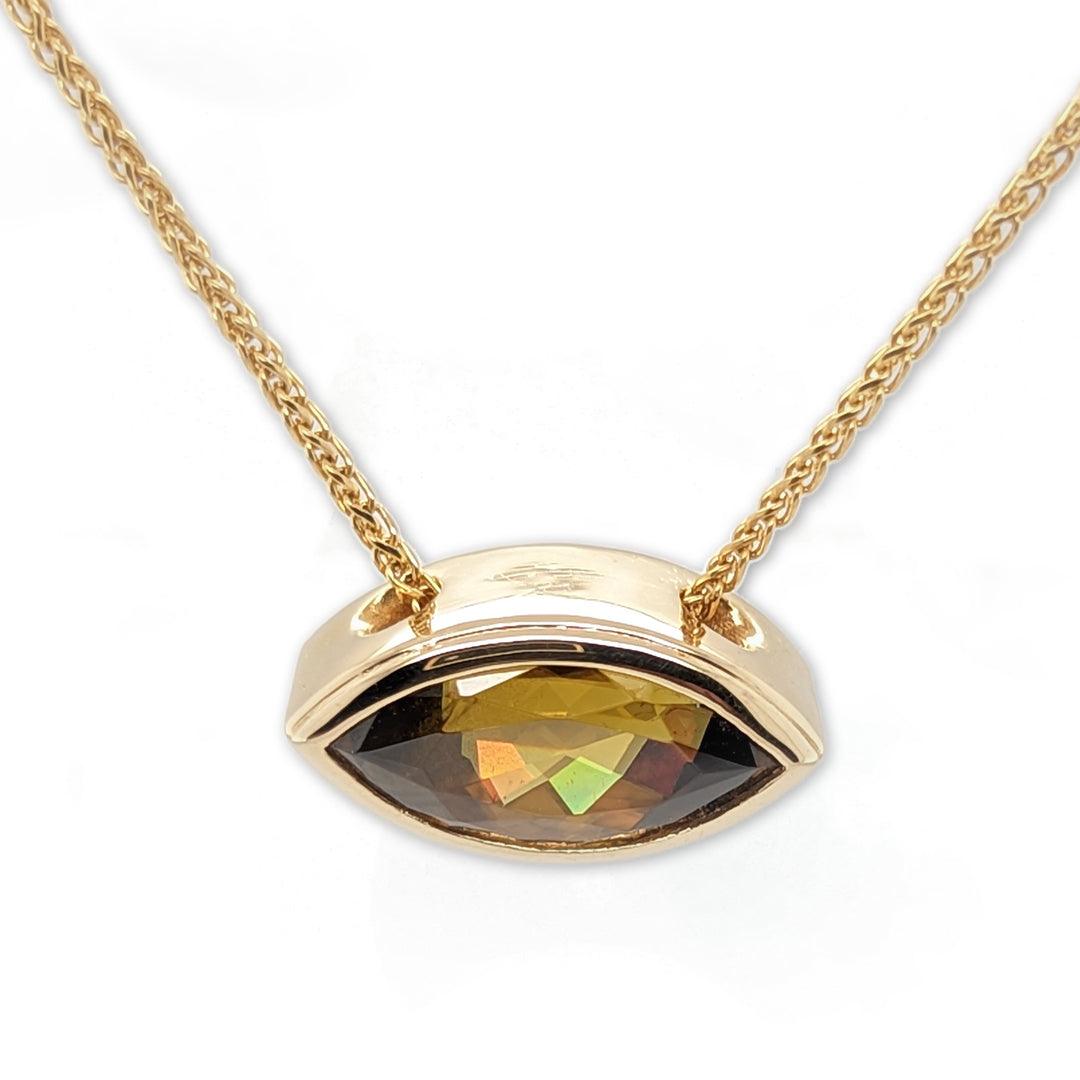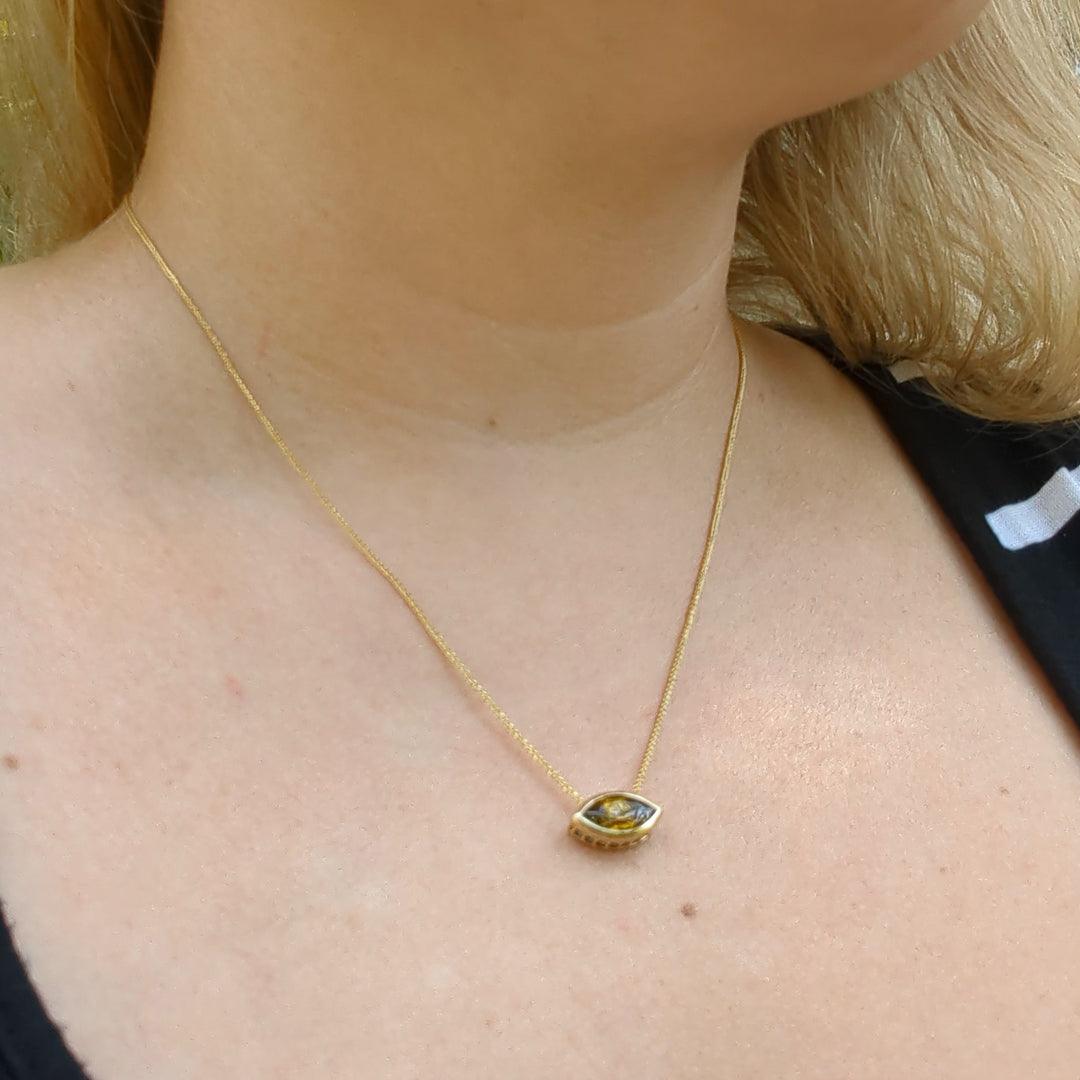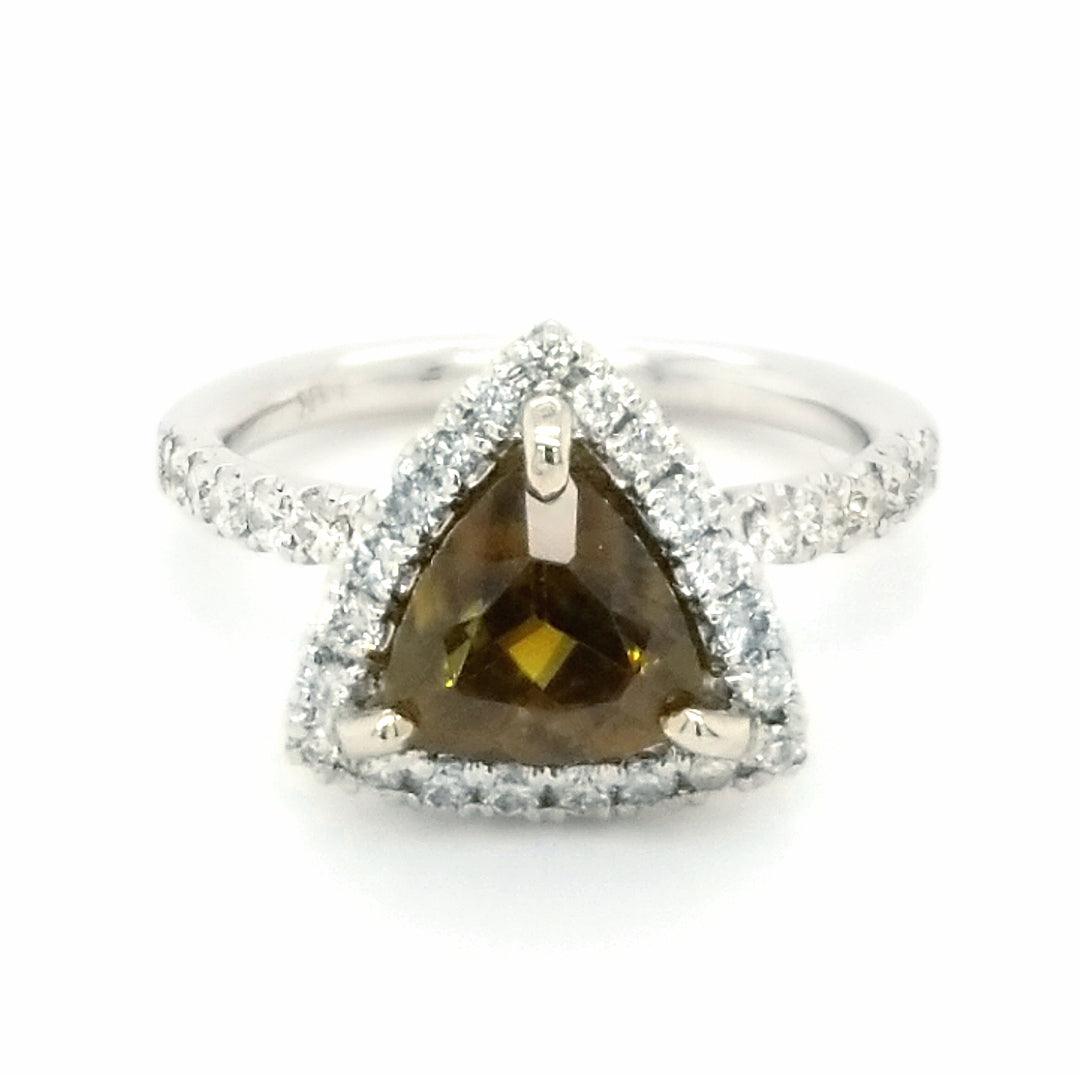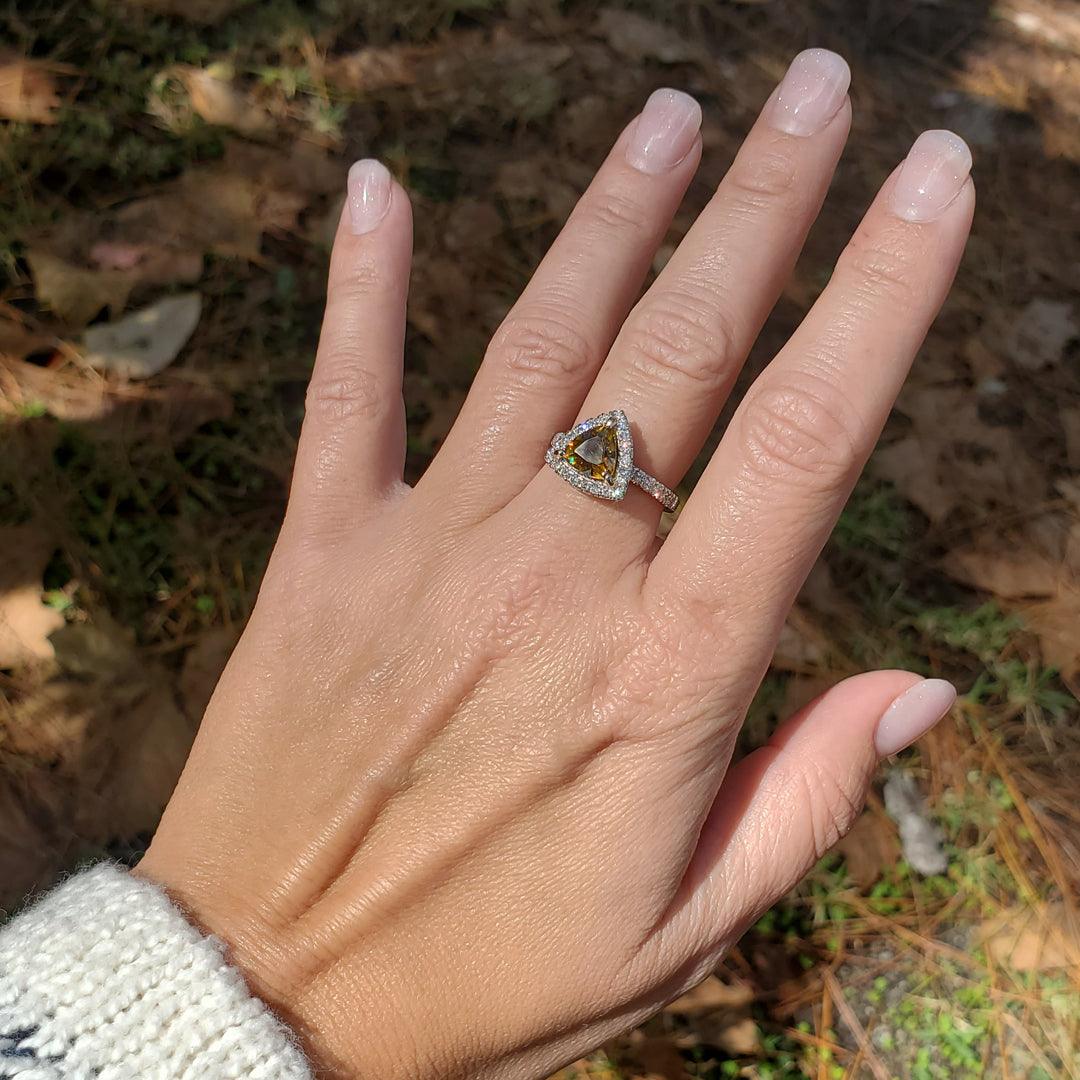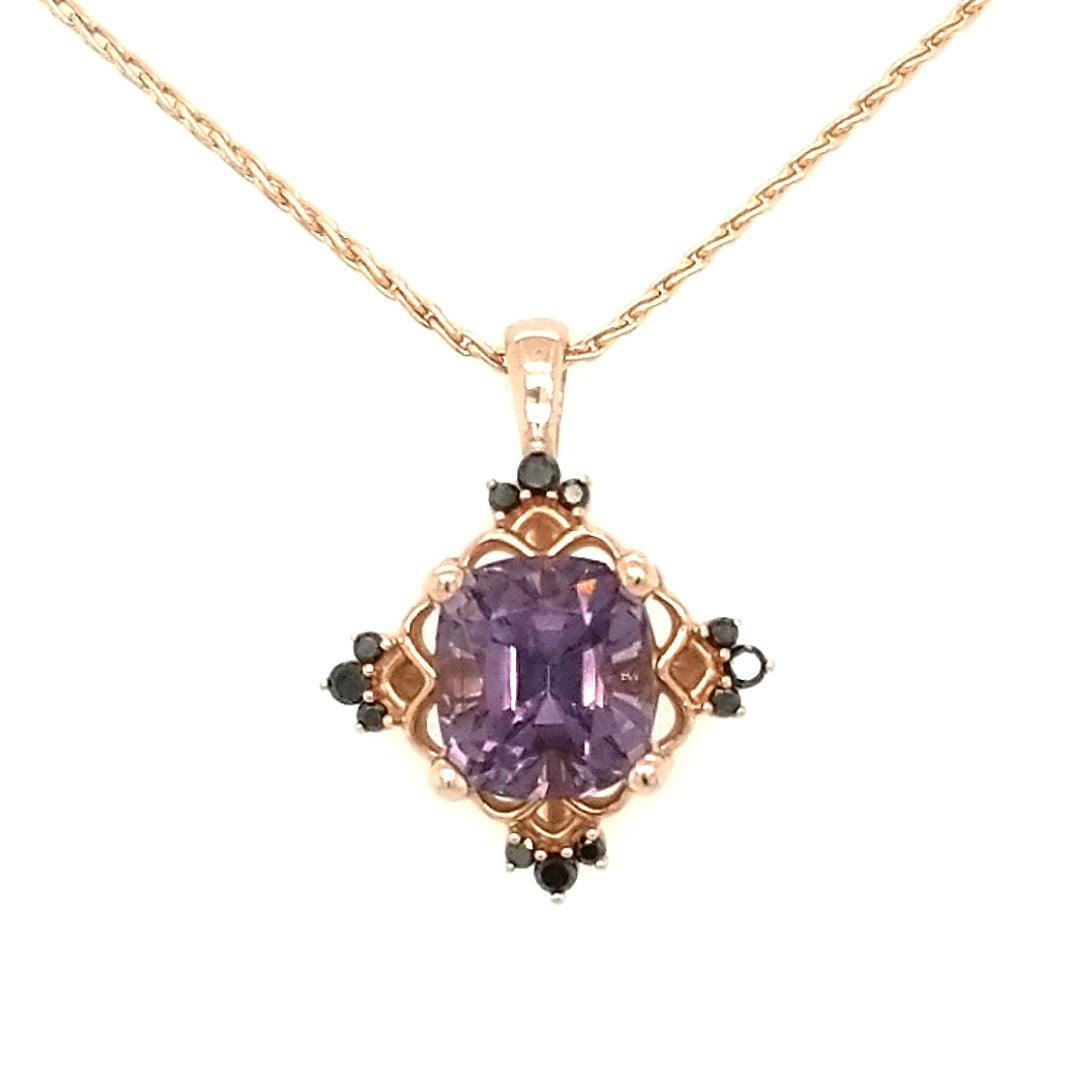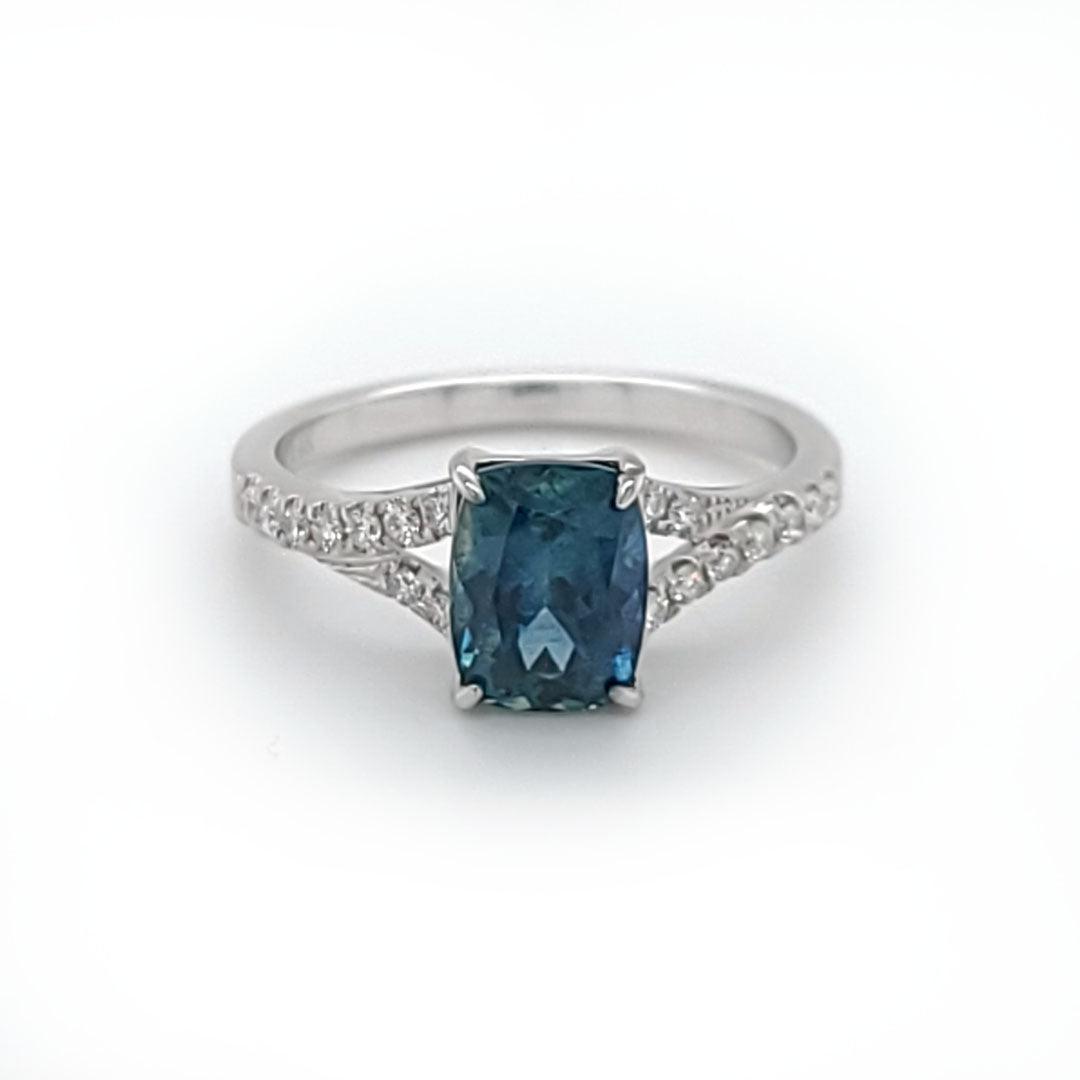Sphene
A stone of mental agility, clear understanding, increased visionary capabilities, focused will, practicality, manifestation, and enhanced awareness
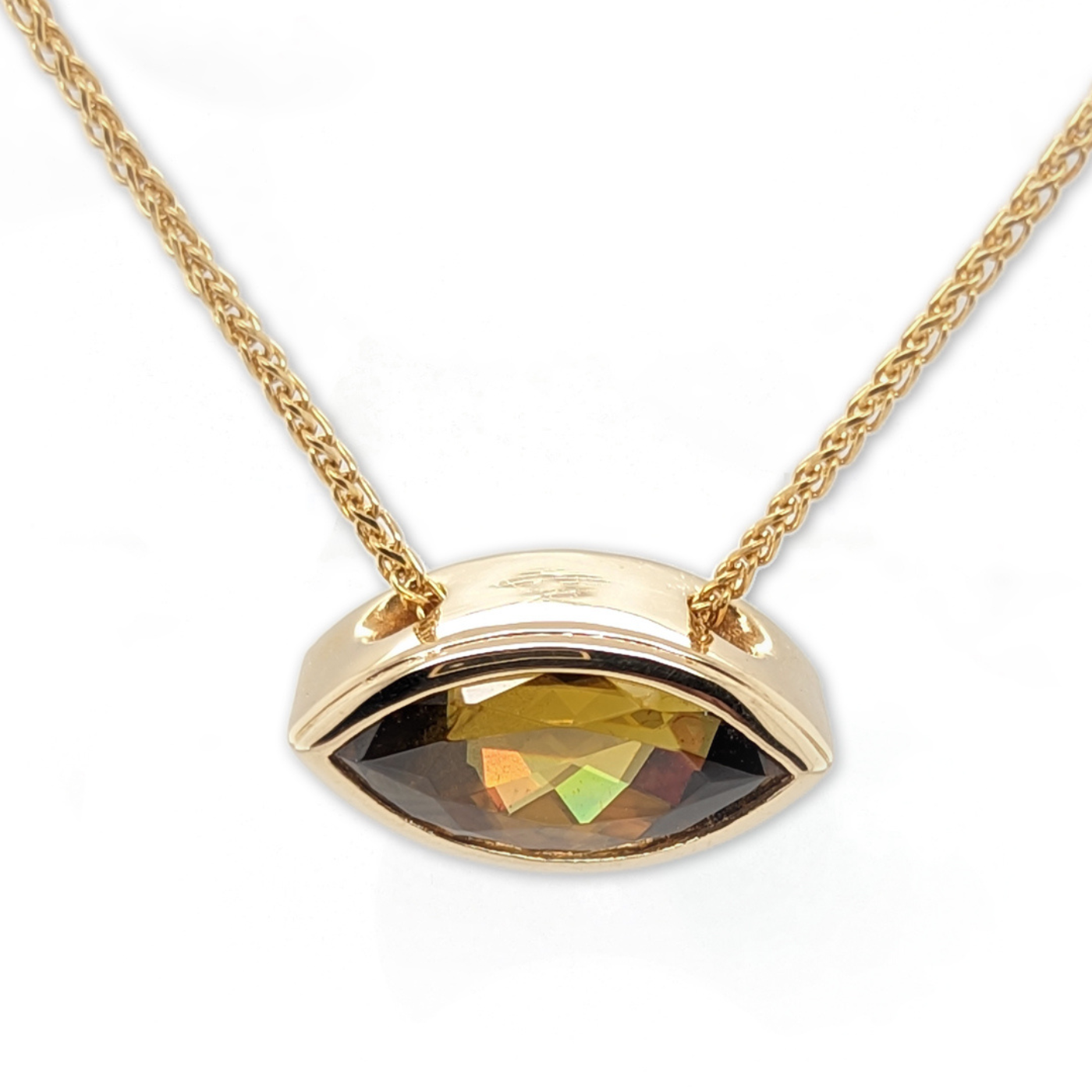
Sphene is the gemstone name of the mineral titanite, which is a rare calcium titanium silicate mineral and a minor ore of titanium. Sphene is pleochroic with a dispersion rate higher than that of diamonds. It is known for its monoclinic crystal habit and its resinous to adamantine luster which is rarely observed in other minerals. It produces wedge-shaped or tabular-shaped crystals but it can also occur in lamellar or granular habits. Sphene derives its name from the Greek term “sphenos”, meaning wedge, alluding to the shape of its crystals. Sphene was the dominant name for this mineral until 1982 when the International Mineralogical Association adopted the name “titanite”. Sphene is still the name used in the gem world, however, and still commonly used in Europe. Sphene sometimes contains rare earth minerals such as yttrium, niobium, and cerium and is also widely included by iron, fluorine, magnesium, sodium, zirconium, chromium, and manganese. Iron inclusions severely affect the coloring of these stones and the darker stones like brown or black have higher iron content whereas yellow or green stones carry a lower iron content. Titanite can be found as an accessory mineral in igneous rocks like granite, granodiorite, or nepheline, and in metamorphic rocks like marble, calcium-rich gneiss, and schist. The best crystals often can be found in marble. Its high dispersion rate, 0.051, makes this a sought-after gem for private collections. Gem-grade sphene comes from Austria, Russia, Madagascar, Brazil, Pakistan, Sri Lanka, and Namibia.
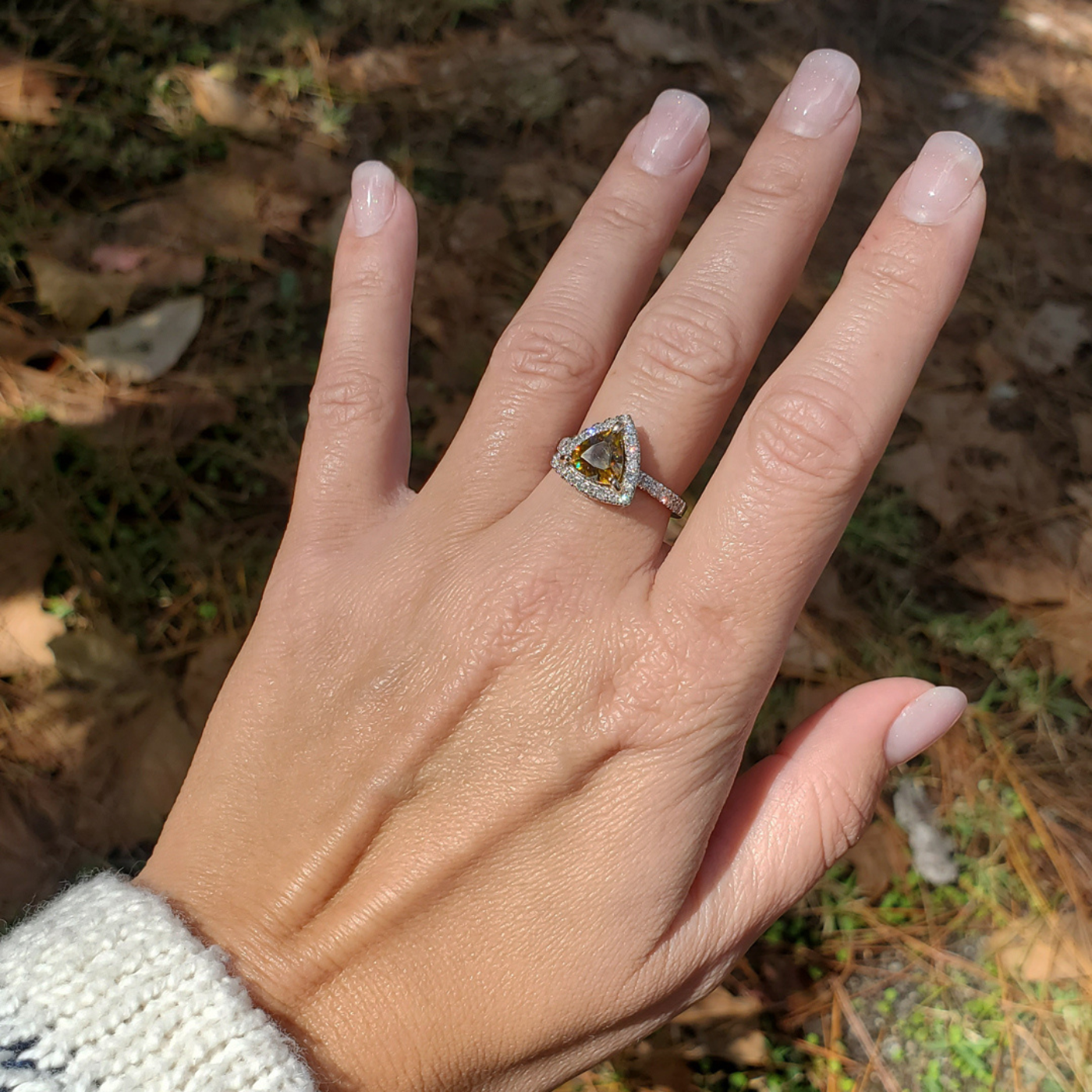
Metaphysical
Sphene is a great stone for scholars. It helps increase mental agility and focus allowing one to better understand teachings in a clear, linear fashion. It practically forces awareness of details and helps urge us towards organized action. It is a stone that empowers the will, assisting us to make intuitive, educated strides for our future, today. It is a manifestation stone that offers enhanced awareness to the Third Eye which can promote expansion of consciousness. It stimulates the thinking process in a clear, concise way that is helpful to anyone who feels pulled in many different directions. It activates the Solar Plexus chakra while providing mental clarity, which can help us feel purposeful and guided in our actions. It has increased visionary capabilities and is a great stone for etheric travels, meditative states, and journeys on all levels. Sphene forces our minds to be awake, aware, and alert while acting as a catalyst toward intuitive action.
CHAKRA
- 3rd - Solar Plexus - Manipura
- 6th - Third Eye - Ajna
ELEMENT
- Storm
PARTNER STONES
Lapis Lazuli, Iolite, Lazulite, Sodalite, Tourmaline, Heliodor, Golden Labradorite, Sunstone, Imperial Topaz, Citrine, Hematite, and Obsidian
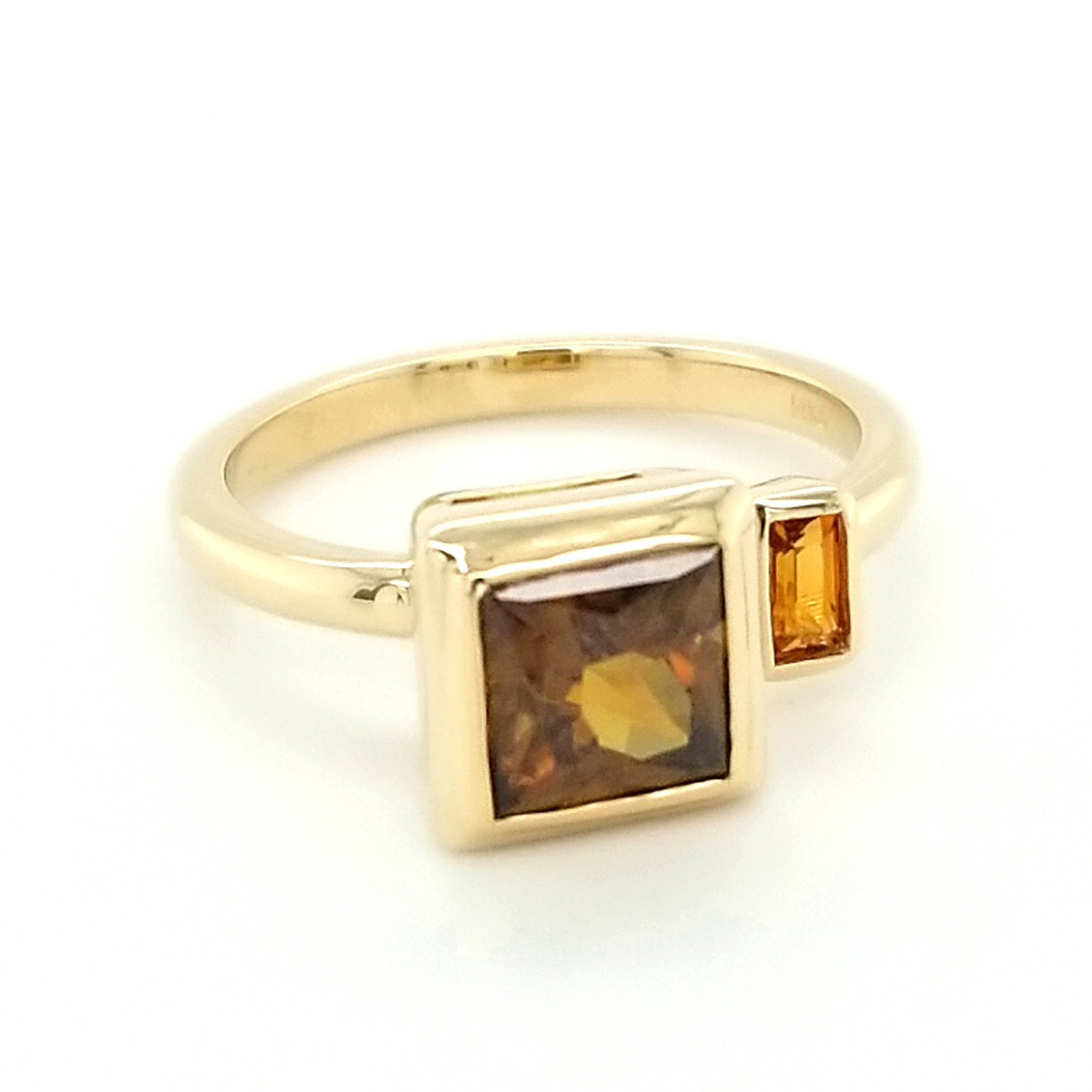
Science Stuff
• Chemical Formula: CaTiSiO5
• Color: Green, Yellow, Orange, Brown
• Hardness: 5 - 5.5
• Crystal Habit: Monoclinic
• Refractive Index: 1.84 - 2.11
• Specific Gravity: 3.4 - 3.6
• Optic Character: Biaxial (+)
• Transparency: Transparent to Opaque
• Double Refraction: .100 - .192
• Luster: Adamantine to Greasy
• Fracture: Conchoidal
• Cleavage: 2,2
• Mineral Class: Silicates, Nesosilicates - Titanite
Shop This Gemstone
Sphene
Blog Resources
• “Sphene”, Simmons, Robert, et al. The Book of Stones: Who They Are and What They Teach. North Atlantic Books, 2015.
• “The Gemstone Sphene”, <https://www.minerals.net/gemstone/sphene_gemstone.aspx>
• “The Mineral Titanite”, <https://www.minerals.net/mineral/titanite.aspx>
• “Titanite - Also Known as Sphene”, Hobart M King, PhD, RPG, <https://geology.com/minerals/titanite.shtml>

